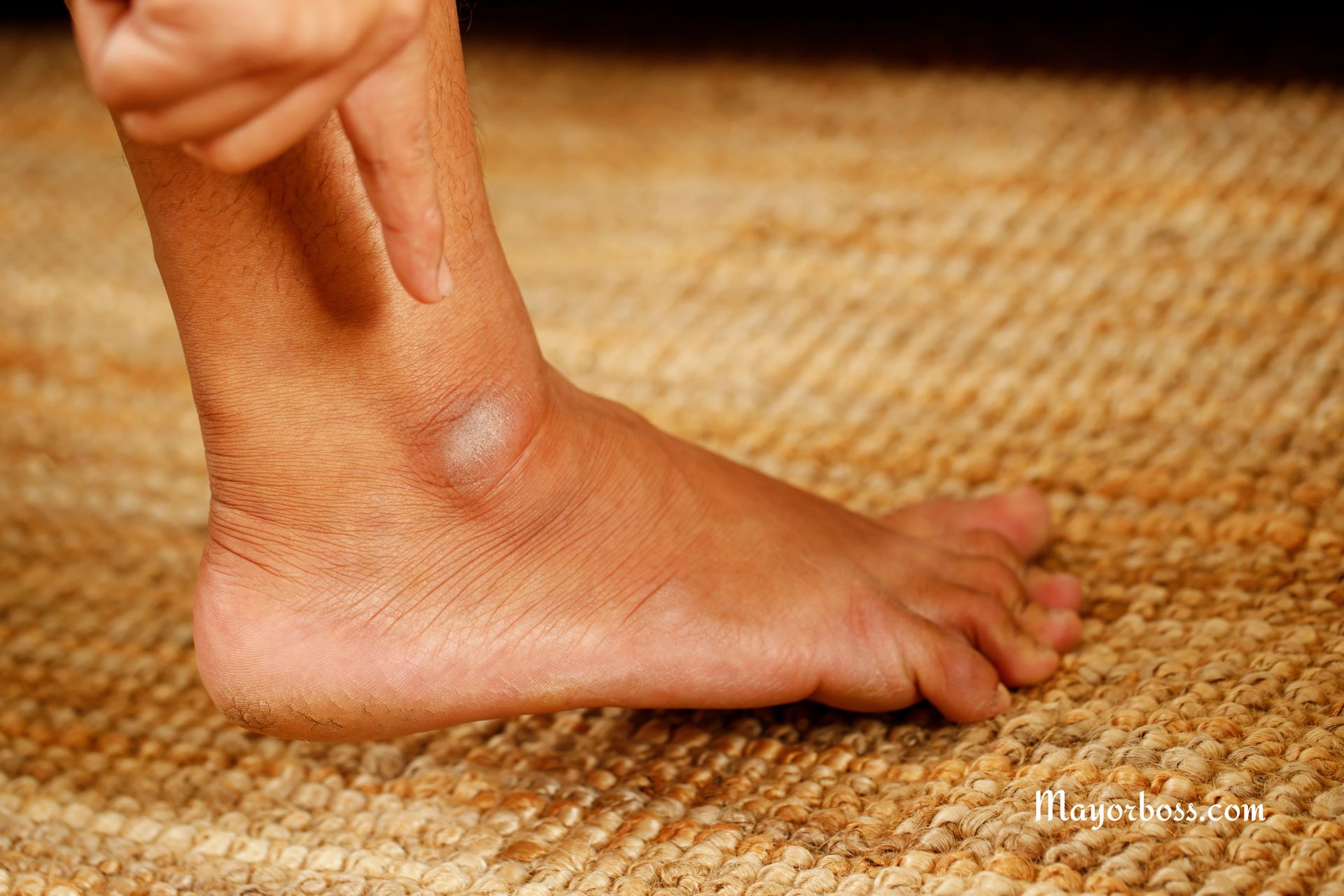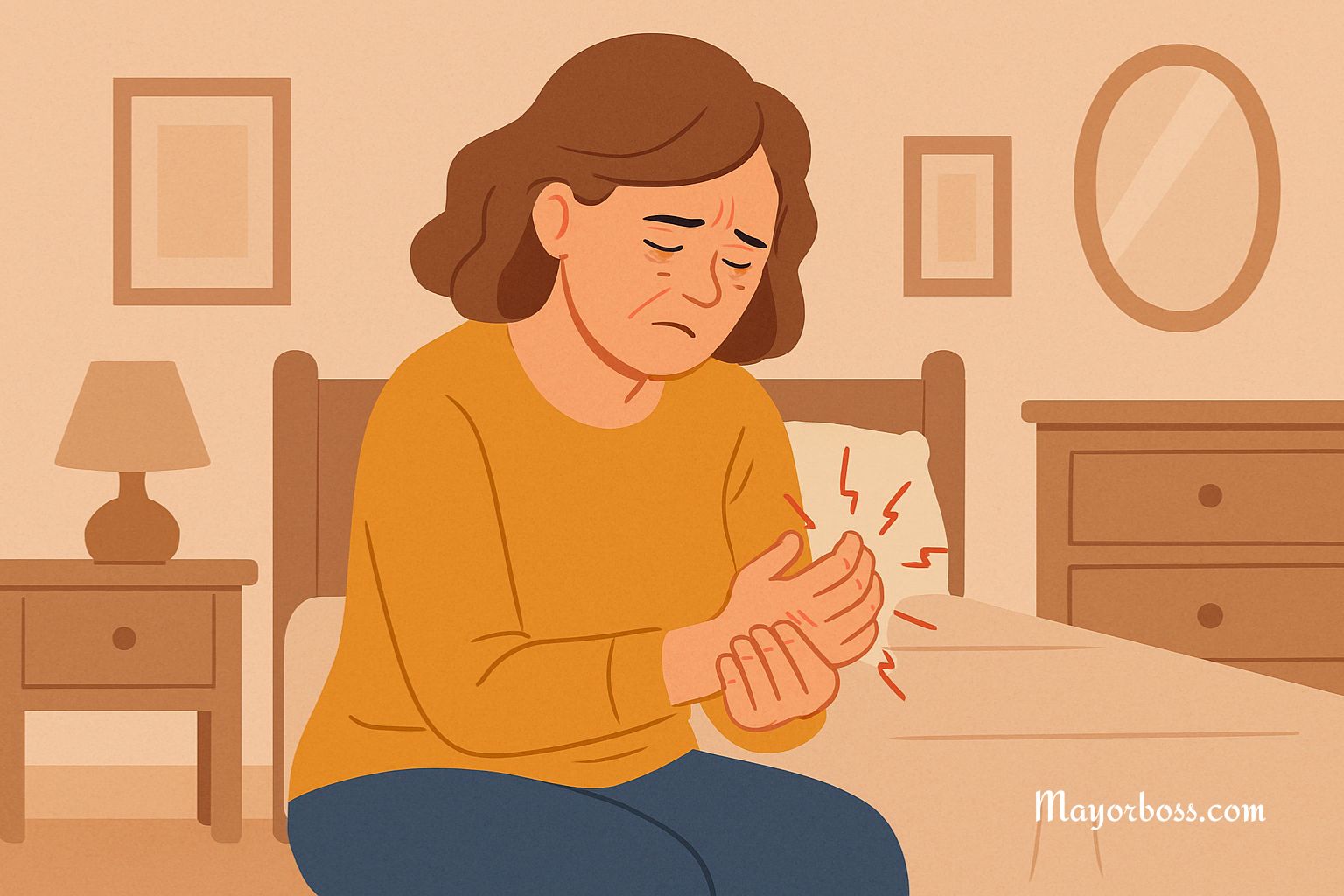Warning Signs of High Cholesterol Might Appear on Your Ankles
According to experts, cholesterol is a waxy, fat-like substance that is found in every cell of your body. It helps with certain vital processes, such as building healthy cells and making hormones. Your body manufactures much of the cholesterol it needs, but you also take in cholesterol through certain foods, like meats, dairy products, and fried items.
When you have an excess of “bad” cholesterol, also known as low-density lipoprotein (LDL), it can build up in your blood vessels. Over time, this buildup may lead to blockages, which then increase the chance of heart disease or stroke. Because high cholesterol does not always present clear symptoms, it is often called a “silent condition.” Therefore, experts are urging people to pay attention to small bodily cues that can be vital.

How Can The Ankles Show a Warning Sign?
It might be surprising to learn that high cholesterol can sometimes appear as unusual deposits of fat beneath the skin. These deposits are called xanthomas (pronounced zan-THOE-muhs). They come in various shapes and sizes, but one of the places they can form is around the ankles.
In some individuals, these deposits resemble small, yellowish bumps or lumps that tend to grow gradually over time. When they appear near the ankles, they may be seen along the Achilles tendon or around the joints. While these lumps can be harmless on their own, they are sometimes linked to underlying lipid issues like high cholesterol.
Experts at Healthline describe these swellings lump as “varying in size. The growths may be as small as a pinhead or as large as a grape. They often look like a flat bump under the skin and sometimes appear yellow or orange. They usually don’t cause any pain. However, they might be tender and itchy.”
Why Should You Be Concerned?
If you notice any lumps around your ankles that feel like firm, painless bumps under the skin, you should take them seriously. While not every lump or bump is caused by high cholesterol, call your healthcare provider for an appointment to rule out any underlying concerns.
If these ankle bumps are indeed xanthomas, they point to the possibility of high levels of blood lipids (fats), such as cholesterol or triglycerides.
When untreated, high cholesterol can increase your likelihood of heart attacks, strokes, and other serious cardiovascular issues. In other words, these lumps on your ankles might be a sign that your body needs help.
Who Is More Likely to Have These Signs?
Not everyone with high cholesterol will see ankle lumps, as many folks don’t have visible symptoms at all. However, some are more prone than others. People with inherited (familial) hypercholesterolemia often have higher-than-normal cholesterol from a young age. Such individuals are more likely to develop xanthomas on their tendons, including the Achilles tendon on the back of the ankle.
Other risk factors for high cholesterol include diets rich in saturated or trans fats, lack of regular exercise, obesity, and smoking. Maintaining a healthy lifestyle is an essential step in preventing high cholesterol before trouble begins.
Prevention and Management
Below are some guidelines the Centers for Disease Control and Prevention suggest that you can follow to manage or reduce your chance of high cholesterol:
- Eat a Balanced Diet
Focus on consuming plenty of vegetables, fruits, whole grains, lean proteins, and healthy fats (like those found in avocados or nuts). These foods can help keep cholesterol levels in check. - Engage in Regular Exercise
A brisk walk or a friendly game of basketball can do wonders for your heart health. Aim for at least 30 minutes of moderate physical activity most days of the week. - Avoid Smoking
Smoking makes it more difficult for your body to manage cholesterol. If you smoke, talk with your healthcare provider about strategies to quit. - Monitor Your Weight
Excess body weight can contribute to elevated cholesterol. Keeping a healthy weight reduces that risk. - Consult a Healthcare Provider
If you have a family history of high cholesterol or if you spot unusual lumps around your ankles, consider visiting a healthcare professional. They can check your cholesterol levels through a blood test and guide you on the best treatment plan.
When to Seek Medical Help
Do not hesitate to make an appointment with your doctor if you spot suspicious bumps around your ankles or if you have a family history of cholesterol problems. Early detection and treatment go a long way toward preventing serious complications. Your physician may suggest lifestyle changes or prescribe medications to help lower your cholesterol. Keep in mind that each step you take to care for your body helps guard against future health concerns.






